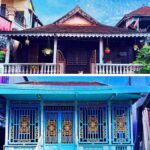Va Temple is currently located in Van Gia village, now Trung Hung ward, Son Tay town, Ha Noi. This is one of the four shrines to worship the god of Ba Vi mountain – Tan Vien Son Thanh – the First God of Fortune in the Four Immortals of Vietnamese folk beliefs (The Four Immortals include Saint Tan Vien, Holy Mother Lieu Hanh, Saint Giong, and Saint Chu Dong Tu). Through the dynasties, during the reigns of Minh Mang, Tu Duc, and Thanh Thai (Nguyen Dynasty), there were renovations and repairs; during the reign of King Duy Tan (1907), Va Temple was renovated and had the scale it has today.
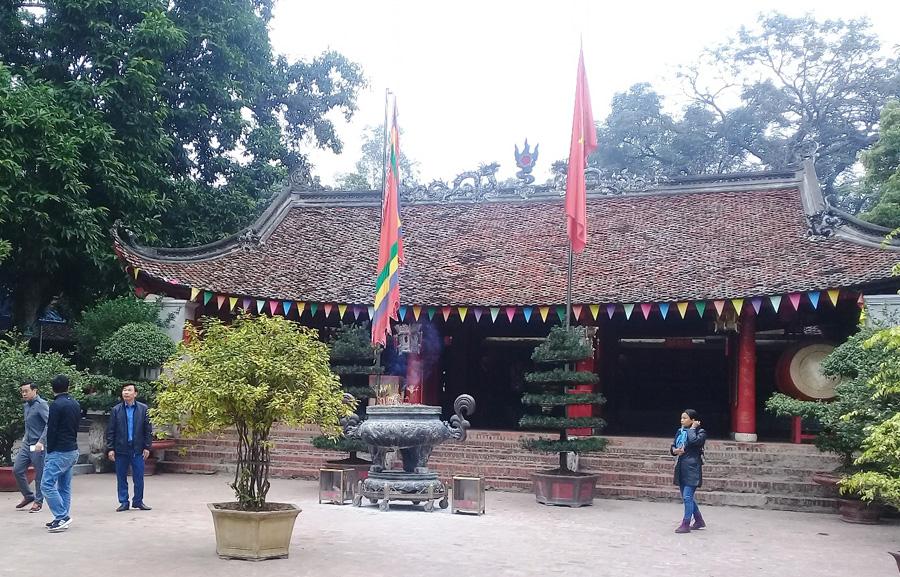
Va Temple is currently located in Van Gia village, now Trung Hung ward, Son Tay town, is one of the four shrines to worship the God of Ba Vi mountain – Tan Vien Son Thanh – the First God of Fortune in the Four Immortals of Vietnamese folk beliefs. Photo: TITC
The current temple is made entirely of laterite, the most common and typical material of the Doai region, which is already famous for the architecture of the ancient village of Duong Lam right next door. The temple is located on a low and wide hill; the temple grounds are surrounded by a laterite fence that has been stained by time.
The architectural area of the temple is about 2,000m² wide and is covered by an ancient iron wood forest that has been recognized as a heritage tree by the Vietnam Association for Conservation of Nature and Environment. The number of heritage trees is quite large, up to 90 (meaning the age of these trees must be at least over 100 years), including 85 green iron wood trees, 2 white frangipani trees, 2 magnolia trees and 1 bud tree.
The outermost is the large Nghi Mon gate, with three entrances; the middle gate is especially large, painted red and gilded, with a pair of majestic dragons. Nghi Mon is usually only open for the procession during the temple festival. On both sides of Nghi Mon are the bell tower, drum tower; next is the brickyard, living room, and front worship area. Normally, worshipers and worshipers only stop at the front worship area; visitors can rest and learn about the temple through the photos and royal decrees placed here.
From Nghi Mon gate, on the pillars are parallel sentences praising the temple landscape and honoring the merits of Duc Thanh Tan Vien. Many details are built in the image of the four sacred animals with the hidden meaning of praying for favorable weather, bountiful crops, and always having talented people to help the people and the country.
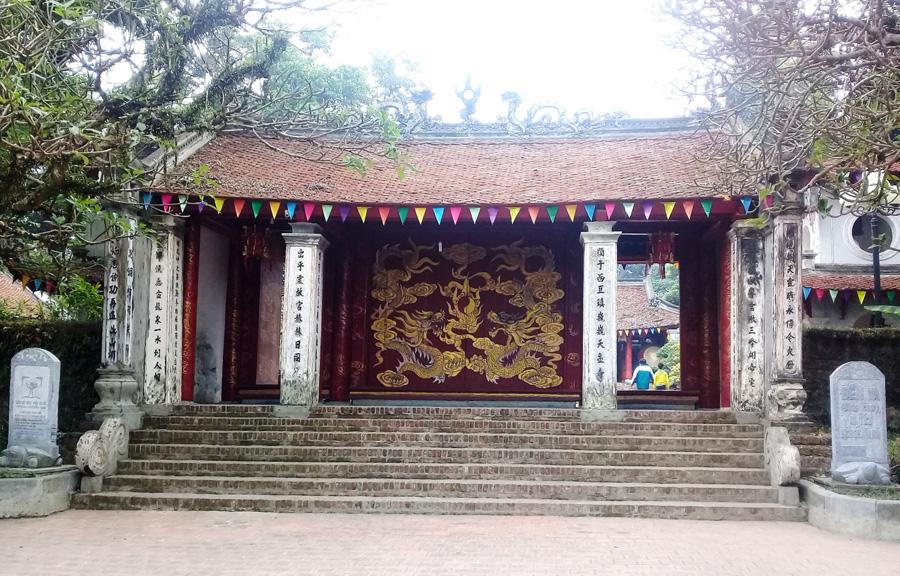
The Nghi Mon Gate is large and wide, painted red and gilded, with a pair of majestic dragons. Photo: TITC
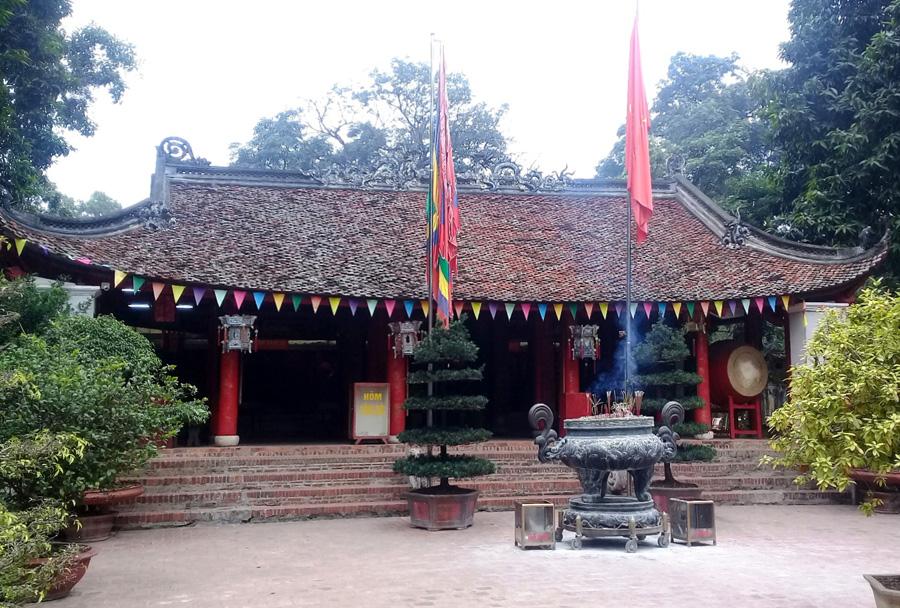
The main gate is usually only opened for the procession during the temple festival; on both sides of the main gate are the bell tower and drum tower
The temple currently preserves 5 copies of the “Tan Vien Son Thanh” legendaries; 18 “royal decrees” of the kings; 47 pairs of parallel sentences carved and written on the walls, columns, and wood, and 18 horizontal lacquered boards written on wood or stone… The central and upper halls have many precious artifacts, including 4 large statues, 3 pink and white horses, 3 thrones, vases, jars, stone lamp posts, bronze bells, stone steles… This area is only for the temple to take care of incense and lamps, and perform rituals on festival days. The main temple worships three mountain gods: Duc Thanh Tan Vien, Duc Cao Son Dai Vuong and Duc Quy Minh Dai Vuong; outside are the four pillars of the court and the left and right civil and military officials. This is considered the most special feature of the four palaces worshiping Duc Thanh Tan Vien in this Doai region, because it has all four pillars of the court and two civil and military officials.
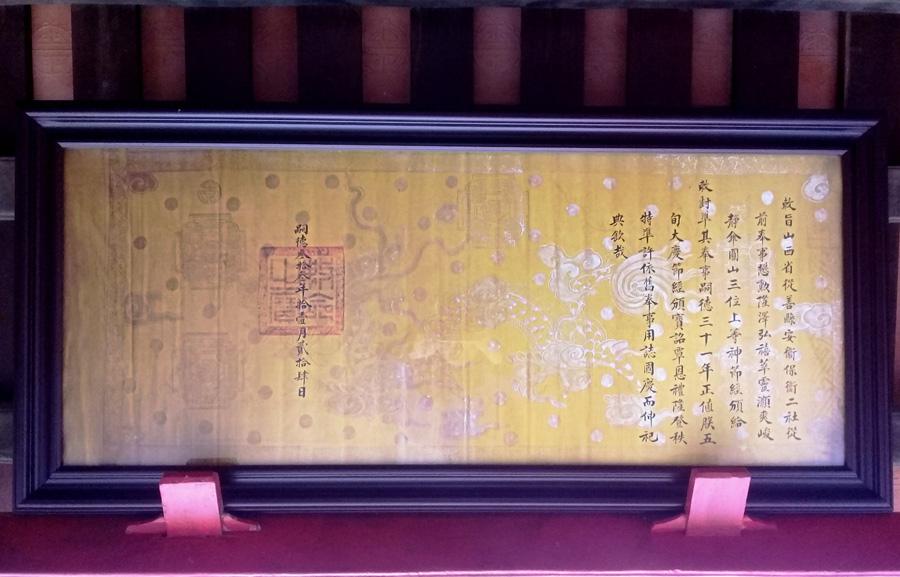
Va Temple currently preserves many tablets of sacred relics and royal decrees of the kings
The Va Temple Festival is the biggest festival in the Doai region, held twice a year. The Spring Festival is held on the full moon day of the first lunar month every year (from the 13th to the 15th); every 3 years, a big festival is held once, called the main festival (in the years of Ty (the Mouse) – Mao (the Cat) – Ngo (the Horse) – Dau (the Rooster).
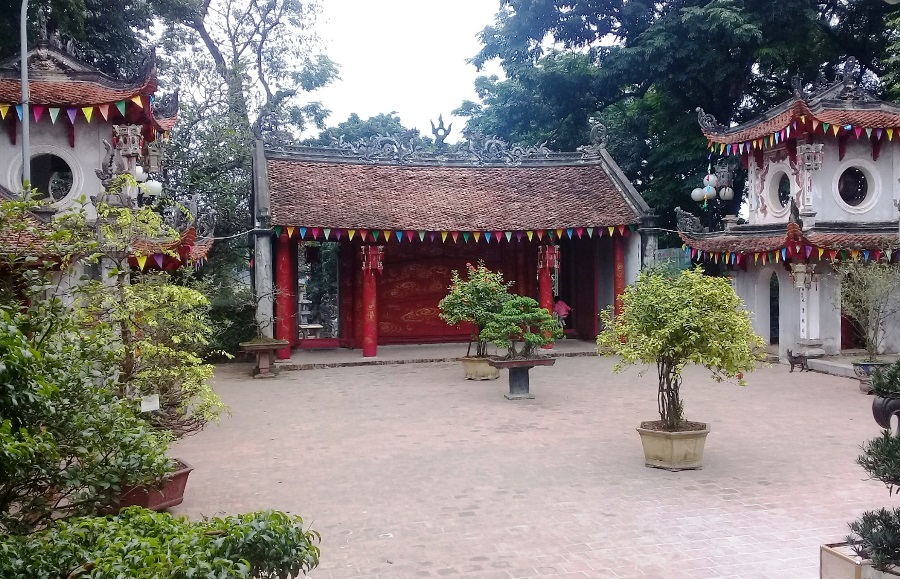
The central and upper halls are only for the temple staff to take care of the incense and lights, and perform rituals on festival days
When visiting Va Temple, visitors should not miss the temple of Miss Chin Gieng. According to the belief of the local people, when coming to Va Temple, one must first wash their face, hands and feet before entering the temple to worship. Therefore, when coming to Va Temple, locals and visitors often go to Miss Chin well temple to pray and ask for holy water at the well.
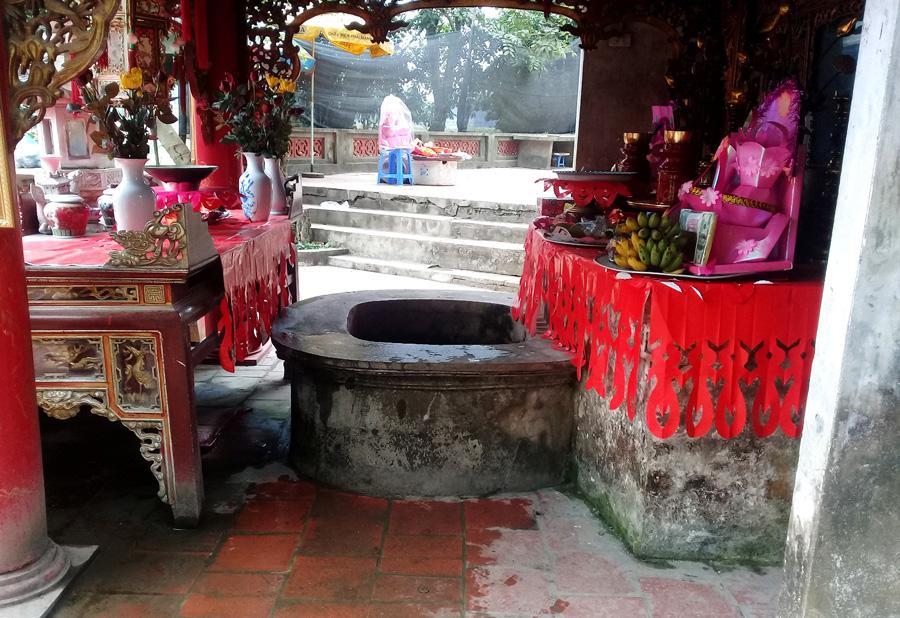
The temple of Miss Chin well has become a sacred place not to be missed when visiting Va temple
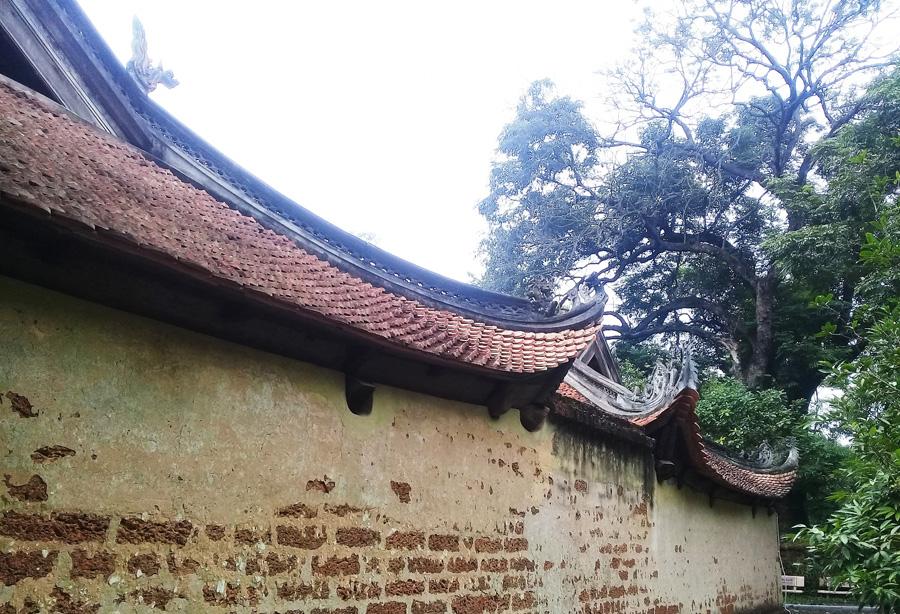
Va Temple is built of laterite, surrounded by many ancient trees



